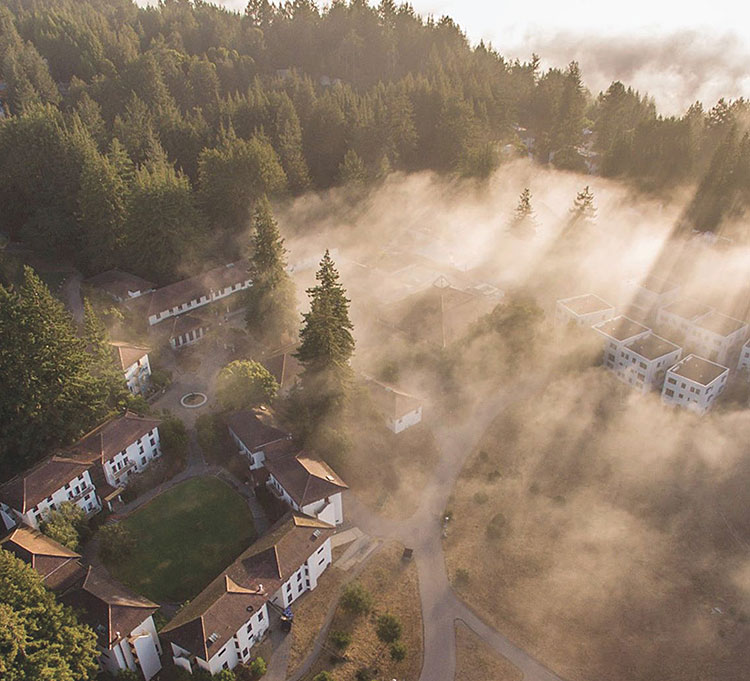School Plans For 28,000 Students by 2040
By Jondi Gumz
On Jan. 7, UC Santa Cruz unveiled its draft 2021 UC Santa Cruz Long Range Development Plan and environmental impact report.
According to campus officials, the draft plan respects the original vision for the campus and calls for a “compact footprint” for learning, research and housing. Specifically it:
- Proposes sites for up to four new residential colleges.
- Expands housing for 100 percent of new full-time student enrollment above 19,500.
- Includes housing for up to 25 percent of new employees, based on demand.
- Improves circulation on campus with a focus on alternative transportation.
- Increases the natural reserve.
If the plan is fully implemented, building space on the campus would increase from 5.8 million gross square feet to 14.1 million gross square feet, mostly in the lower and central campus.

The draft environmental analysis acknowledges that implementing this long-range plan may induce housing demand in the region, which has for years experienced a housing shortage, a situation worsened by the loss of 900 homes in the CZU lightning fire in August.
“The potential impact would be significant and unavoidable,” according to the report, because “no feasible mitigation is available.”
Additionally, “potential impacts related to water supply would be significant and unavoidable,” the report noted, because “on-site water recycling and water demand reduction measures would be subject to technological demands and funding and therefore cannot be assumed to sufficiently reduce the significant impact on water supply.
Campus leaders and planners have been working for nearly four years on this draft plan, which sketches in broad strokes what the main campus might look like two decades from now.
UCSC Chancellor Cynthia Larive, in her message on the plan, said, “This type of long-range foretelling is not easy, and I offer my thanks to all who have taken part in the current plan’s development. The year 2020 was a valuable reminder that the road ahead can be hard to predict and is rarely without unexpected turns. But planning efforts of this magnitude are extremely valuable.
The challenging part, of course, is to translate the answers to these big questions into a land-use plan…. The plan does not mandate or approve growth. It simply lays out where the infrastructure to support growth might occur if it is eventually needed and funded.”
She predicted the UCSC of 2040 will be more accessible, functional and flexible with new paths and street designs making the campus less car-dependent with facilities “integrated into the landscape itself, just as campus founders first imagined nearly 60 years ago.”
The draft LRDP and the accompanying draft Environmental Impact Report are available online for review at lrdp.ucsc.edu/2021/info.html.
State law requires a 45-day review period, and UCSC is providing 60 days to ensure the public has time to thoroughly review the plan, Larive said. To make understanding the plan easier, there is a community handbook with a summary of the much longer draft Environmental Impact Report and a Frequently Asked Questions webpage to help people understand the plan.
Two online public meetings will take place Feb. 3 and 4, both 5 to 7 p.m. to get an overview. To participate, see lrdp.ucsc.edu.
Public input on the plan and draft Environmental Impact Report will be accepted at the public meetings, via email at eircomment@ucsc.edu (put “LRDP EIR comments” in subject line) or by mail to Erika Carpenter, Senior Environmental Planner, Physical Planning, Development, and Operations University of California, Santa Cruz 1156 High Street Santa Cruz, CA 95064.
The deadline to comment is 5 p.m. March 8.